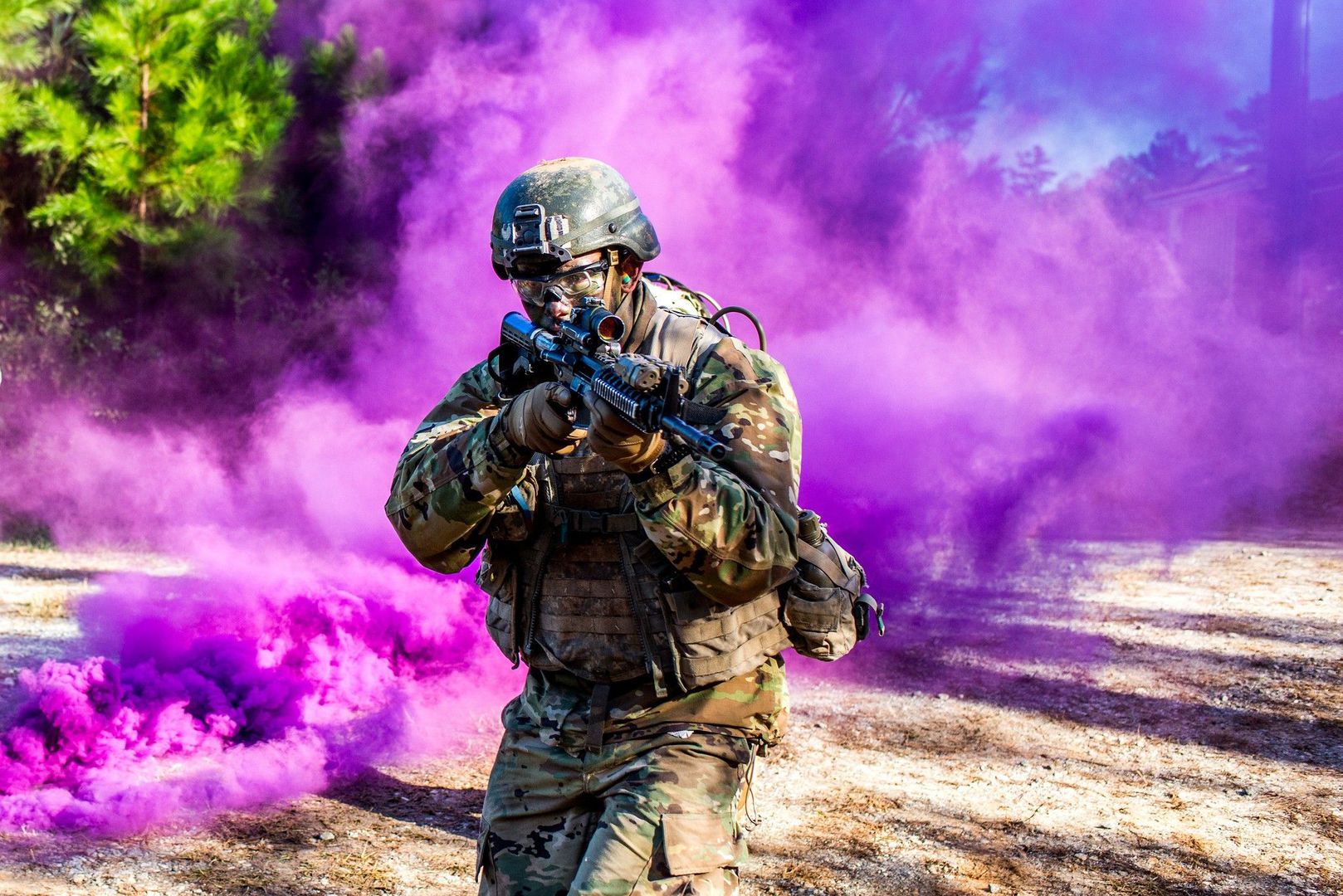ADELPHI, Md: When faced with battlefield threats, American Soldiers depend more than ever on body armor to protect them. To adapt to the evolving dangers of getting shot, the Army created a flagship program dedicated to protection technologies.
At the U.S. Army Combat Capabilities Development Command’s Army Research Laboratory, leaders designated 10 research programs as essential. Soldier protection made the list.
“The United States fields the best body armor in the world, but near-peer adversaries have threats designed to defeat body armor,” said Dr. Christopher Hoppel, Physics of Soldier Protection to Defeat Evolving Threats program manager.
This essential research program, or ERP, directly supports an important modernization priority for the Army, Soldier Lethality. Soldier lethality spans all fundamentals: shooting, moving and communicating, protecting, sustaining and training, according to Army officials.
“We are working on the technologies to provide Soldiers with protection from those future threats while not placing any additional burdens on the Soldier.”
Army scientists and engineers aim to discover, innovate and transition effective yet lightweight body armor to defend Soldiers from next-generation ballistic threats — without restricting movements or increasing load.
The program has three research thrusts: terminal ballistics, armor materials and computational mechanics. In each of these areas, Army scientists partner with experts in the Department of Defense and the Department of Energy, as well as industry and academia, to bring in additional knowledge and identify the most promising technologies in the field.
Working together, the researchers plan to improve Soldier protection technology using multiple approaches.
“In the short term, we are working to develop and demonstrate ballistic mechanisms to defeat small arms threats in a compact armor package,” Hoppel said. “At the same time, we are developing new ceramic composite materials technologies to minimize the weight and bulk of the armor.”
Testing is already underway with advanced ceramic blends such as synthetic diamond, along with novel manufacturing methods to provide higher toughness and lower density. Researchers are also investigating ultra-high molecular weight polyethylene composite materials that may absorb the kinetic energy of the oncoming bullets.
So far, the team has seen considerable success with its comprehensive systems-engineering approach. Last year, Army scientists examined the design methodology and the requirements for behind armor blunt trauma, which address the energy transmitted to the body during a non-penetrating impact.
Working together with the CCDC Data & Analysis Center, researchers made a significant adjustment to the behind-armor-criteria that reduced the weight of the armor by up to 20 percent. Then-Vice Chief of Staff of the Army General James McConville, approved the change last June as part of the Vital Torso Protection program.
For the long term, Army scientists plan to create computational tools to help them design armor for any ballistic threat.
“We are developing improved models to capture the full system response, including the fracture and failure of these materials under high pressures and loading rates and behavior of the material interfaces,” Hoppel said. “In these efforts, we are using the Army’s high performance computing centers to model how the projectiles and armors respond under high rates of loading.”
Scientists and engineers in the program partner with industry and academia through the Army’s collaborative research alliance known as MEDE, Materials in Extreme, Dynamic Environments. The alliance is led by Johns Hopkins University and includes a consortium of universities and industry partners seeking to understand the effects of material microstructure on the response to ballistic loading conditions.
Army scientists are also working together with the Dynamic Compression Sector at Argonne National Laboratory to conduct controlled experiments designed to calibrate and validate computational models for large-scale impact and penetration problems.
By partnering with leaders in the field, the researchers believe their collective efforts will strengthen their push for better protection technologies.
“We have gained a good understanding of the operative mechanisms in these emerging threats, and that knowledge illuminates paths forward to defeat the threats efficiently and robustly,” Hoppel said. “This will enable us to push the boundaries of armor design, creating much more effective protection for the Soldier.”
This story is the first in a multipart podcast series, What We Learned Today, highlighting the mission behind each of lab’s essential research programs. This series will provide coverage on the goals guiding the structure of these programs and the managers who lead them.











